Kids SUP guide – what, where, when & why

In this kids paddle board or kids SUP (stand up paddleboard) guide I’ll cover everything you need to get your children out on the water safely and with ease. Find out the best kids SUP gear and boards, how to teach them and some top tips shared by teachers and SUP parents.
Watersports have huge benefits for children and SUP is no different. But when I started taking my young cousins out on the water I was surprised by how little information there is online to help guardians get youngsters into the sport. I spoke with paddleboard instructors and parents to collect the best advice and have put it all together in this helpful guide.
Please note that safety should be a priority and I advice learning with an instructor for the beginning, especially with if you or your child aren’t confident and experienced swimmers.
Why take your kids paddle boarding?
I asked on a forum what are the benefits of taking your kids paddle boarding. Here are some of the replies I got….
- “Taking kids SUP-ing is like a meditation. 20 minutes on the water and they are calmer and more relaxed than any other activity I do with them”
- “There are so many benefits to taking your children paddleboarding. Like improving confidence with water and in themselves, learning patience and of course, it’s good fitness and exercise!”
- “It’s just really fun!”
- “My children learnt paddle boarding at age 6 and 9. They picked it up really quickly and have a much better technique than I do. It’s been a great thing to do as a family and we love exploring lots of different water places locally and have even been away on SUP holidays“
- “I love going paddleboarding with my 18month. He sits or stands on the front of the SUP and enjoys watching all the views“
- “I bought my son a kids SUP 2 years ago and he hasn’t stopped since. He makes it look very easy!“
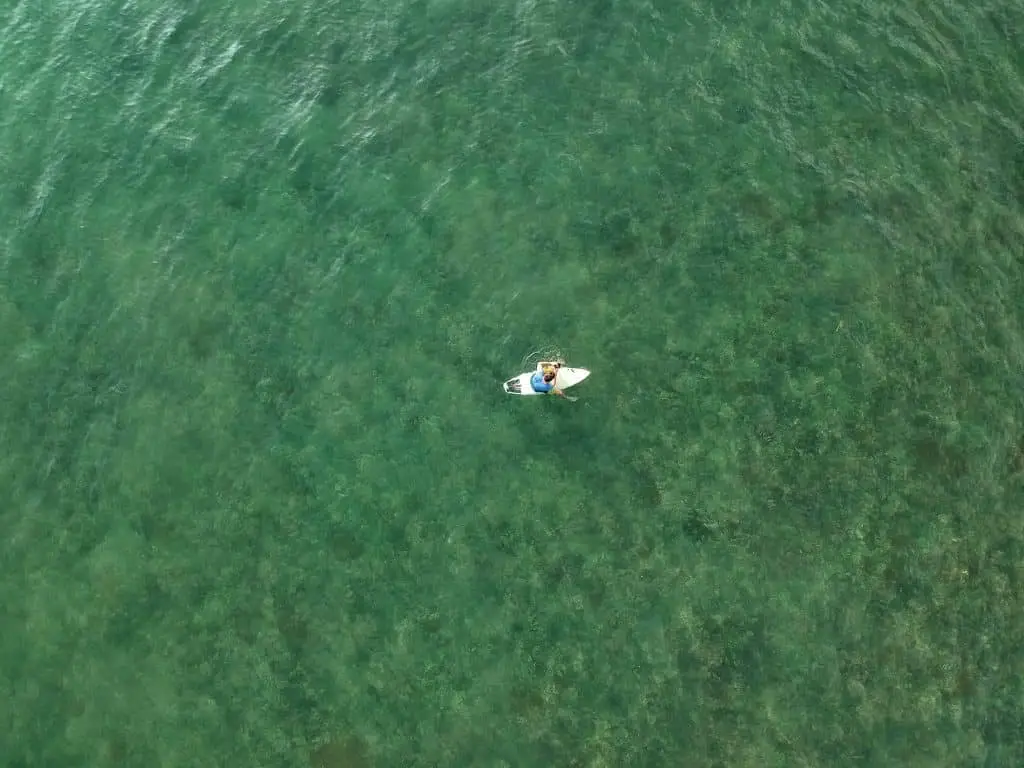
Basic safety to follow when paddleboarding with children…
Safety should be your number one priority. So follow these guidelines which were suggested by experts to ensure you and your little ones are kept safe while SUPing…..
#1 Any child you take out on the water should be able to swim
#2 There should always be a spotter nearby, either an adult in the water or nearby on a board. Having a tow line is a good bit of kit for the spotter to have to hand.
#3 Choose a location that is calm and not too busy to start. As your child grows in confidence you make want to proceed to more challenging waters such as bigger waves. Always take note of the water you are about to enter though – is it safe to be there, is there a strong current, can you get both you and the child to safety easily if needed? Avoid windy days, choppy conditions, and strong currents when paddling with children.
#4 Make sure the child always wears their board leash so if they fall or jump in they aren’t separated from their board
#5 Remember to stay hydrated and to wear sunblock as you burn quicker on the water and can easily reach heat exhaustion if not careful.
#6 ALWAYS use a personal flotation device (PFD). Approved PFD‘s are an affordable accessory that saves lives and should be worn at all times by both adults and children
#7 Ensure your children are well educated so they know how to paddle responsibly and what to do if something goes wrong
#8 It’s good practice to always inform someone who is not joining you where you are goin, what your plan is and how long you intend to be
Getting started with taking children paddleboarding
Assuming you’ve got all your kit sorted (more on the best gear below) you are probably wondering how to get started. If you are unsure about teaching them yourself, start could be with a local school or instructor who after 1 or 2 lessons will teach them the basics so you can then start practising on your own.
Some kids will be confident to head out solo for the first time while others are going to need time to build up to this. Small children can join you on your board first to get a feel for balance and manoeuvring. Once they are ready to try out their own board, start by teaching a few basics on land first on positioning and how to hold the paddle.
When they set off on the water for the first time, have them in the kneeling position, moving to standing when they feel ready. You can then start getting them to practice different moves such as:
- Turning left and right
- accelerating and decelerating
- falling and jumping off the board
- getting back on the board from the water
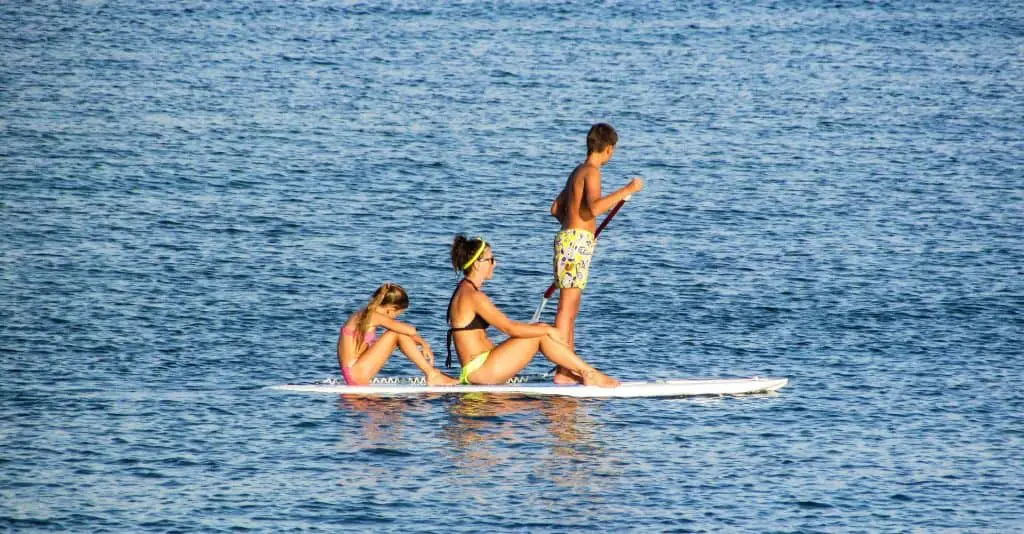
Teaching your children good SUP techniques
STEP 1: The first is to master the stance, starting from the bottom. Stand in the middle of the board. Feet should be shoulder-width apart and positioned about 15 degrees out from the parallel. Aim to have the weight distributed in your feet evenly and don’t grip your toes. Your knees should have a slight bend.
Step 2: Keep a straight back and keep your head looking forward on the horizon. Hunching or looking down can make you loose your balance and will lead to bad habits. The paddlers core should be engaged and strong the entire time.
Step 3: If you suddenly feels unsteady try bending the knees a little more, spreading the feet slightly or inching forward to make sure you are in the middle of the board. As a last resort, you can kneel on the board until they regain their balance.
Step 4: Learn the best techniques to use and drive your paddle. I suggest watching this quick tutorial which will teach you about grasping a good paddle stroke:
Can a child us an adult paddle board?
Yes, sometimes! Depending on their age and size they may be able to use an adult paddle board which will save you having to purchase a new one. Note though that it will be much harder for them to control and manoeuvre so may impact their enjoyment of learning the sport.
For small children you may want to start them off sharing your board (them kneeling or standing at the front of your board). A lot of children will enjoy the freedom and responsibility of having their own board to play with though.
Kids paddle board; what to wear?
Unless you are able to hire a wetsuit, when starting out you’ll probably want to stick your kids in a cheap outfit before committing to buying an expensive wetsuit. On a warm day, board shorts and a rash vest will work fine as long as you aren’t planning to spend too long on the water.
For chillier weather, if your child gets cold easily or if they will be planning to do a lot of paddleboarding, you’ll want to invest in a wetsuit. There are different thicknesses you can choose from but the biggest decision will be going for a shortie – short sleeve and bottoms suitable for warmer weather – or a long wetsuit – long sleeve and bottoms suitable for cold weather.
Whatever they wear, you’ll probably want to get them a pair of wetsuit booties (I recommend NeoSport). They keep the feet warm and protect the feet from any rocks or gravel when getting in and out of the water.
What to look for in a kids SUP – what size?
For a learner you will want a board that is long, wide and buoyant to make learning as easy as possible. If they pick up good technique and want to progress in the sport, you can then advance to speciality boards designed for touring or surfing. Paddleboards have a volume measurement which will tell you how buoyant it is in the water – the higher this number the more weight it can carry.
As a general rule for beginners, get a volume that is double the weight of the user in kg. So if your child is 40kg you’ll want a volume of at least 80 litres. As you build your technique and get better at paddling, you’ll need less volume so, hopefully, the child will grow with the board.
The 2 main types of kids paddle boards:
There are 2 main types of kids paddle boards. The first is a solid SUP and the second is an inflatable SUP. Which one you choose will depend on how you intend to use it. Here’s an overview:
Solid SUPs
There are lots of different materials for solid SUPs but for children Plastic of EPS foam core ones are a great choice. Plastic SUPs are the cheapest option and very hardwearing although they are heavy and not so easy to manoeuvre in the water. EPS foam core SUPs are much more lightweight and are also hardwearing and make a good cheaper option.
Pros: You should choose a solid SUP if you are looking to cover any distance as they are easier to paddle than inflatables. They usually feel more stable than an inflatable board and because there is no set up (ie pumping up your board) then you can be in the water much quicker.
Cons: The biggest disadvantage is their size and the fact they don’t fold down. This will be a big consideration when it comes to thinking about storage in the house and how you will transport it.
Inflatable SUPs (iSUP)
Inflatable SUPs are made from layers of PVC plastic and fibres which join the layers together. The quality of iSUPs varies greatly but once fully inflated it should feel solid. Look for a board that comes with a anti-slip surface. Some also come with extra features like cargo nets and camera mounts.
Pros: If you don’t have a lot of space or are planning to head to the water for short paddles nearby and want easy access, then an inflatable SUP is a good choice for you. They fold down small and can be transported easily (by car or on foot). Because they are softer children are less likely to hurt themselves if they fall on the board.
Cons: There are a few cons to getting an iSUP. They are no quite as hardwearing (although can be fixed with a puncture repair kit) and usually don’t feel as solid on the water. You’ve also got to account for the 20-30minutes it’ll take you each time you want to inflate your board.
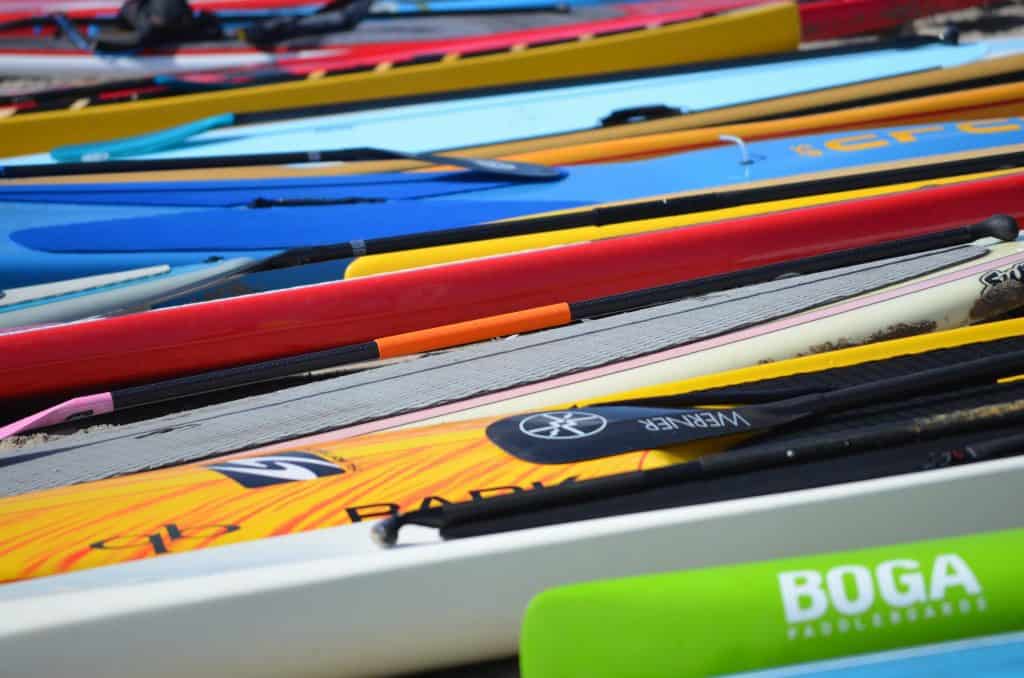
The best children’s paddle board!
Don’t agonise over the process too much as you can’t go massively wrong with your purchase. Firstly, decide if you are going to get a solid or inflatable board. Most lean towards inflatable.
Obviously, if your child becomes a pro and starts competing then you’ll need to take the research a lot more seriously, but the below suggestions are some of the most loved children’s stand up paddleboards for 2020.
Quick note: I’m a big promoter of buying second-hand kit as it helps the planet. Even more so when trying out a new sport or buying for a child who probably won’t even notice or care! See if there are secondhand sellers in your area (contacting rental places is a good idea as they often swap their kit) or turn to Facebook and groups like Used SUP Gear England for bargains…..there are groups set up for most countries! Or take a look on sites like eBay and Gumtree.
Best affordable kids SUP:
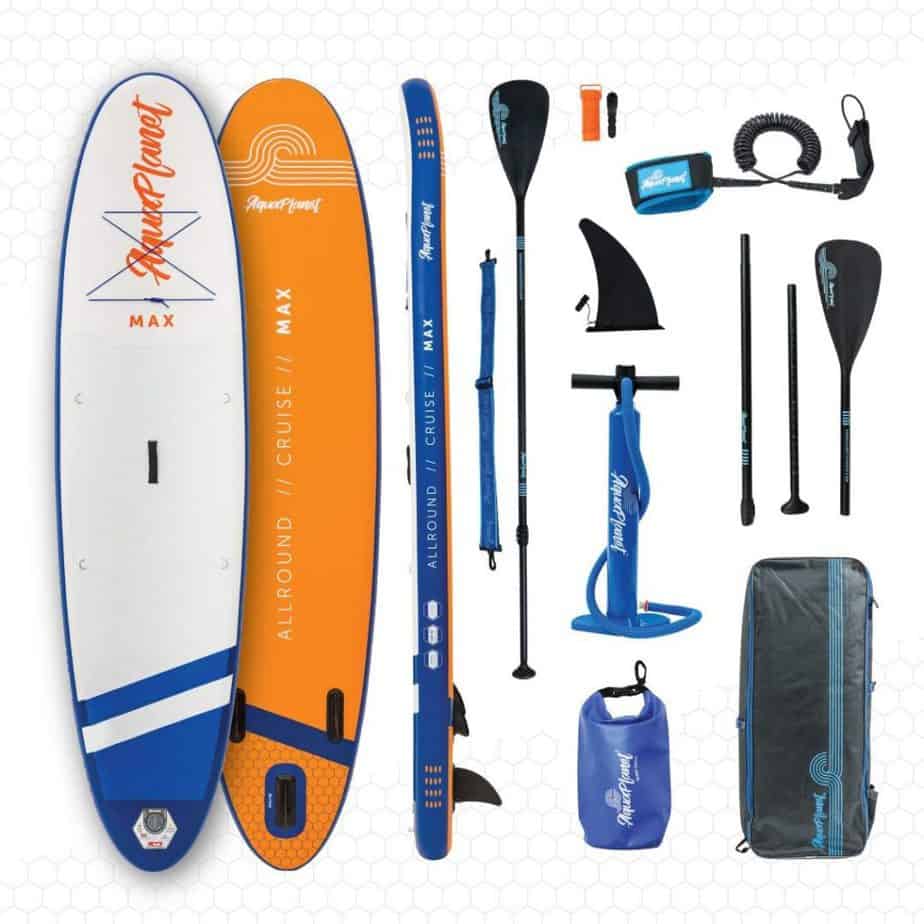
The Aquaplanet is a great value SUP board that is sturdy and comes with all the basic gear you need to get started. It’s a great choice for somoen looking for a cheap board.
This iSUP is 10ft 6″ x 15cm MAX and comes with all the gear you need to get started. You’ll get an Air Pump with Pressure Gauge, adjustable Aluminium Floating Paddle, Repair Kit, carry case and Leash.
Best inflatable kids SUP:

The Bluefin Cruise is a really popular choice and for good reason.Great quality, lots of features and very stable in the water. The set also comes with all the gear you need to transfer the paddle board into a kayak which is a nice feature.
Another sell is the 5 year warranty. You’ll get a carry bag, pump, paddle and kayak conversion kit.
Best solid kids SUP:
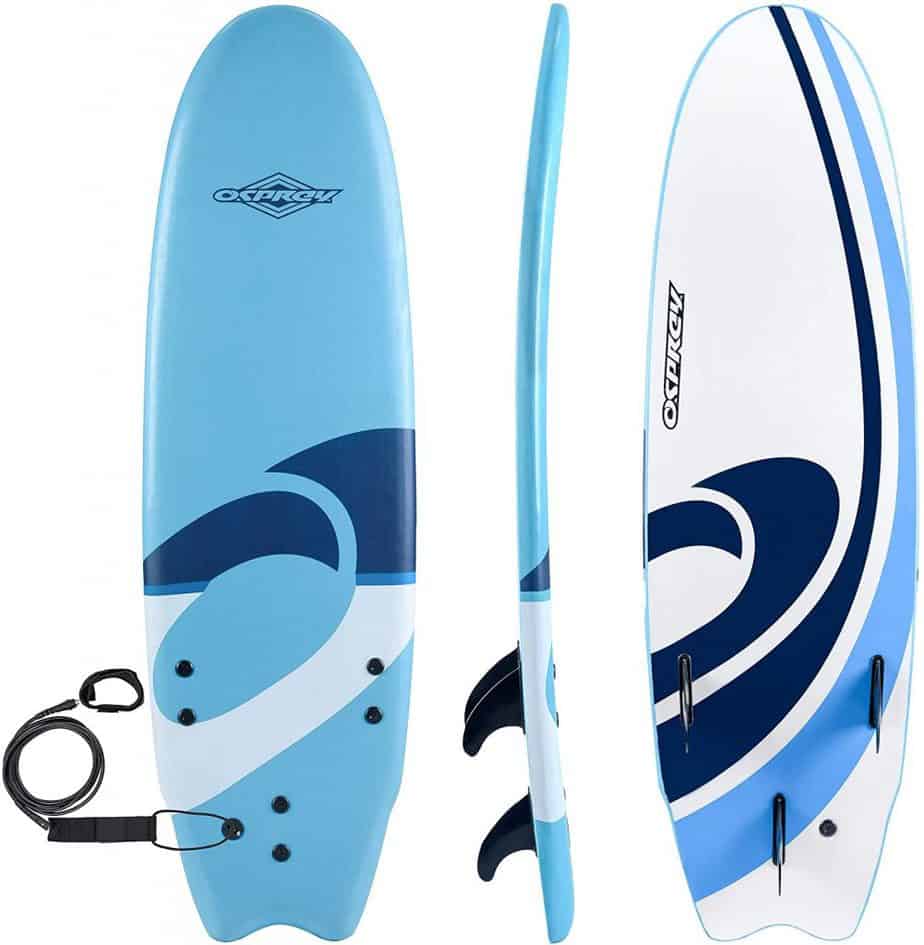
There aren’t a huge range of solid kids SUP boards. For a cheaper option though a foam surfboard will work just fine. The Osprey Foam Surfboard comes with a leash, fins, a safe foam top (good for beginners) and you can choose from 6, 7 or 8ft in length.
Other important paddle board kit
Below are my suggestions for the 5 best Kids SUP accessories.
The waterproof phone cover and the throw line are for the spotter (supervising adult) as a safety precaution. You’ll then want to kit your child out with a paddle, buoyancy aid and a possibly a wetsuit (either short or long depending on the weather).

Children’s SUP Paddle
Click here for my brand recommendation!
Watersports life vest (PFD)
Click here for my brand recommendation!
Waterproof phone case
Click here for my brand recommendation!
Safety Throw line
Click here for my brand recommendation!
Children’s wetsuit
Click here for my brand recommendation!
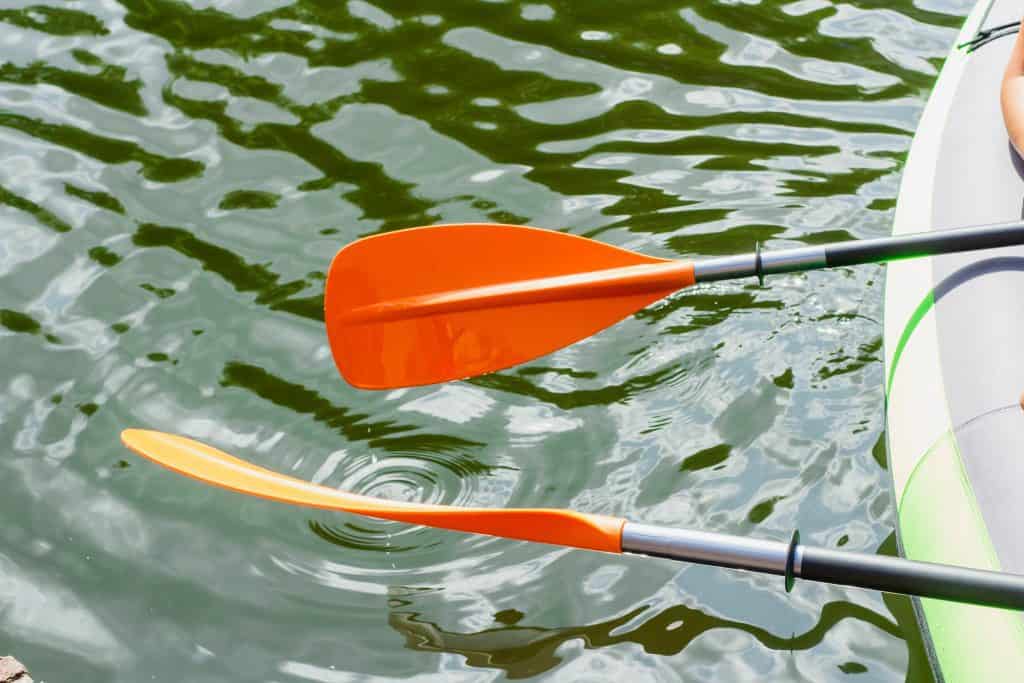
Top tips for kids SUP
Here’s a few final pointers that our SUP parents and instructors wanted to share when it came to taking your kids SUPing:
- Start them young! Get them used to being on the board and in the water from a young age, even if most of the time they are just riding with you.
- Let them progress in their own time and without pressure. The more relaxed you keep your stand up paddleboarding sessions, the more likely they are to enjoy the sport. While some children will that to their SUP with ease, others may need a bit more time to get there.
- Kids get tired, cold, hungry and thirsty quicker so come prepared with lots of warm clothes and snacks on land and an extra dose of patience!
- Mix up the paddling with some fun time by just letting them jump in the water or by playing a few games like races.
- Get them interested in the sport before heading out by watching some videos on YouTube so they are excited about where their practice might take them.
- Remember to pack: a mobile phone and waterproof case, money, a small first aid kit, plenty of snacks and drinks, sunscreen and your PFD’s
- Look out for the 3 biggest beginner mistakes: paddling downwind (get the wind working in your favour not against you), looking at your feet and holding the paddle incorrectly (ie, the scoop facing forwards and not backwards). These 3 mistakes will make paddling a whole lot harder for your children.
Feeling more confident about taking your kids SUP -ing?
I hope you’ve found this children’s paddle board guide helpful. Follow me on Facebook, Twitter and Instagram. Or you can subscribe to my YouTube channel. I give all my advice out for free on my website. If you want to say thanks, you can buy me a coffee!
*Any women reading this?* I founded a women’s adventure community called Love Her Wild. Check out our private Facebook page and see what adventures we have coming up.
A huge thank you to all the contributors of this article for sharing their insights and expertise!
Header images credited to Cheap Surf Gear.
Are you ready for an adventure?

I’m Bex Band, an award-winning author, speaker and founder of the women’s adventure community Love Her Wild. I’m passionate about adventure and conservation!
Thank you!
I mostly work from coffee shops. If you’d like to support my blog and work with a cup of tea just follow this link. Thank you! x

Popular Blogs
Awards








